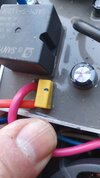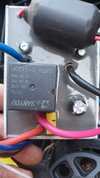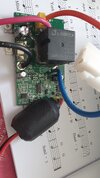TinkerPhil
New Member
I bought an 18v mower with no battery.
Maybe naively I thought I'd be able to run it off a 12V battery charger but no... Nothing!
So I checked all the circuits and they're good weirdly though the 12v input from the charger measured at 18v as if the circuit was so eager for 18v it was forcing 18v back to the source.
When I took the source away the 18v slowly dwindled down
I'm guessing there's some sort of boost circuit in the mower that needs a healthy 18v source to actually power the mower
Now I carelessly ran 12v the wrong way into the circuit - will I have fried it?
so here's a picture of the circuit in the mower
Can anyone give any quidance?
Thanks
Maybe naively I thought I'd be able to run it off a 12V battery charger but no... Nothing!
So I checked all the circuits and they're good weirdly though the 12v input from the charger measured at 18v as if the circuit was so eager for 18v it was forcing 18v back to the source.
When I took the source away the 18v slowly dwindled down
I'm guessing there's some sort of boost circuit in the mower that needs a healthy 18v source to actually power the mower
Now I carelessly ran 12v the wrong way into the circuit - will I have fried it?
so here's a picture of the circuit in the mower
Can anyone give any quidance?
Thanks




